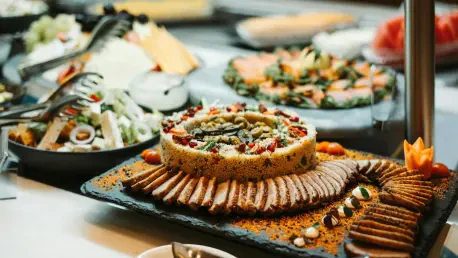In the ever-evolving digital landscape, the transformation of restaurant websites has become a crucial aspect of business strategy. With consumers increasingly relying on online platforms for dining decisions, a robust, user-friendly, and comprehensive website is paramount to attract and retain customers. The digital facet of a restaurant now serves not merely as a point of contact but as a strategic tool for customer engagement and business growth. Owners and operators must ensure their websites incorporate specific elements to stay competitive and relevant, significantly impacting the restaurant’s ability to thrive in today’s tech-driven environment. Exploring these components will reveal a comprehensive guide to designing an effective restaurant website, addressing vital facets that modern-day establishments should weave into their digital presence to enhance customer experience and drive business success.
The Importance of Contact and Location Services
Clear and Accessible Contact Information
For any restaurant, ensuring that potential and returning customers can easily reach the establishment is fundamental to service excellence. Prominent display of essential contact details such as phone number, email, address, and operating hours on the website forms the backbone of customer interaction. Efficient online contact is tantamount to ensuring smooth operations, especially in high-demand periods. Incorporating customer service tools like chatbots or contact forms allows establishments to maintain interaction capabilities round-the-clock, providing solutions to inquiries and facilitating reservations beyond traditional operating times. These functionalities not only alleviate pressure on phone lines but also enhance customer satisfaction by presenting a seamless communication channel. Instant feedback mechanisms fortify customer relationships, improving operational efficacy and fostering long-term engagement.
Location and Direction Services
Incorporating well-curated location and direction services greatly elevates customer convenience and drives foot traffic. An easily navigable location page with an embedded map, seamlessly accessible from the homepage, enriches the customer experience by providing precise directions. Effectively managing multiple locations can be accomplished by using visual cues and specific data, enabling patrons to identify the nearest or preferred venue. By linking this feature with a business’s Google My Business profile, the website enhances its searchability and credibility, providing additional context for diners. The strategic exposition of location details optimizes consumer accessibility, facilitating effortless navigation and thereby improving customer interactions with the restaurant’s physical space. This approach strengthens brand presence, encouraging potential customers to explore dining opportunities with minimal friction.
Branding and Mobile Optimization
Consistent Branding Across Platforms
The digital representation of a restaurant should be a mirror to its physical branding, creating a cohesive and immersive experience for customers from online to in-store interactions. Integrating existing branding elements like fonts, colors, and logos ensures consistency and fosters a sense of trust and familiarity among patrons. A cohesive digital identity not only aligns with physical premises but deeply ingrains brand values within the consumer psyche, enhancing loyalty. Shake Shack exemplifies this strategy by effectively unifying branding both online and offline, seamlessly guiding customers through a holistic journey. Such uniformity empowers the establishment, fortifying its identity and consequently, influencing purchasing decisions and brand advocacy among its clientele. Consistent branding articulates a clear narrative, underlining the restaurant’s ethos across all interaction points.
Mobile-Responsive Design
As a dominant proportion of local searches are executed via mobile devices, mobile optimization emerges as a critical aspect of digital presence. Catering to young, tech-savvy demographics such as Millennials and Gen Z demands mobile-first strategies, offering touchscreen-friendly booking systems and click-to-call functionality. Mobile responsiveness guarantees an intuitive browsing experience, aligning seamlessly with contemporary consumer habits that include mobile-centric interactions. This approach transforms mobile devices into a conduit for ordering food, securing reservations, and perusing menus, providing convenience and fostering increased engagement. As digital technology advances, aligning restaurant website design with mobile users remains imperative—offering swift, efficient access to information and services bolsters customer satisfaction and nurtures loyalty, thereby driving business growth.
Menu Integration and SEO Optimization
Digital Menu Display
In today’s dining landscape, where a substantial number of patrons check online menus ahead of visiting establishments, the importance of quick-loading, easily navigable menus cannot be overstated. Transitioning from cumbersome PDF downloads to polished, text-based digital menus accelerates the browsing experience, offering efficiency and intuitiveness. Such adaptations allow restaurants to intertwine branding elements, enriching the online menu without compromising usability or functionality. Ilili exemplifies how menus can be digitally tailored, enhancing user-friendliness while maintaining brand integrity. A digital menu not only accommodates the modern diner’s preferences but serves as a vital tool in driving pre-visit engagements, influencing the decision-making process of prospective customers and increasing reservation rates significantly.
SEO Strategies
To dominate local search rankings, an effective restaurant website must employ targeted, localized keywords throughout its content, ensuring optimal visibility among competitors. Building high-quality backlinks and utilizing SEO-optimized templates amplify search engine performance, promoting organic traffic and improving site discoverability. Regularly updating Google Business Profiles and maintaining consistency in NAP (Name, Address, Phone) details further enhances engagement potential. Strategic SEO efforts align with consumer queries, reinforcing visibility and legitimacy, integral to capturing search intent effectively. Coupled with continuous optimization, a fortified SEO strategy significantly enhances site traffic, paving the way for increased patronage and more substantial business outcomes, as restaurants adapt to become ever more accessible on digital fronts in today’s competitive environment.
Imagery and Ordering Systems
High-Quality Photography
Engaging, eye-catching imagery plays an influential role in shaping customer perceptions and decisions. High-quality photographs showcasing splendid dishes and inviting dining environments strengthen customer attraction, propelling their decision to dine. Visual content serves as a potent tool, emotionally engaging patrons and emphasizing the restaurant’s culinary appeal and ambiance. The effective deployment of captivating food imagery, as demonstrated by Delbar, showcases how visual elements can magnetize consumer interest, emphasizing the dining experience’s allure. Superior photography brings to life the restaurant’s offerings, capturing its essence and drawing viewers’ attention, often serving as the catalyst in transforming potential interest into actual visitations, thereby driving the establishment’s success.
Digital Reservations and Ordering
Digitalization of reservations and orders is an integral aspect of modern restaurant operations, accommodating consumer expectations and mitigating pressures associated with traditional booking methods. Integrating systems optimized for mobile access and offering diverse payment options ensures seamless transaction experiences that align with leading delivery platforms. Incentives such as discounts or free delivery for online ordering encourage usage and increase patron loyalty, thereby fostering ongoing customer interaction. As technology reshapes business practices, incorporating sophisticated reservation systems positions restaurants as accessible and user-oriented, thriving despite competitive pressures. This advances ease of service, offering unprecedented levels of convenience, enticing patrons through streamlined interactions, securing ongoing business, and driving establishment success in today’s tech-centered marketplace.
Conclusion: Strategic Advancements for Success
By encompassing the aforementioned elements within restaurant websites, businesses have embraced digital transformation at a crucial juncture within the industry. The consolidation of user-friendly components such as contact and location information, cohesive branding, mobile responsiveness, digital menus, effective SEO, and high-quality visuals underscores the significance of adapting to consumer behaviors. High rates of interaction foster lasting client relationships, securing steady patronage and increasing business opportunities. Establishing systems for seamless reservations and integrated ordering directly reflects the importance of staying ahead in an increasingly digital consumer landscape, reinforcing competitive edge and ensuring business success. Through these strategies, restaurants can fortify their online presence, captivating and retaining customers, with technology driving continued growth and prosperity.









